Just In
- 2 hrs ago

- 6 hrs ago

- 8 hrs ago

- 9 hrs ago

Don't Miss
- News
 IPL 2024: Ex-cricketer Tells Why Mumbai Indians Replaced Rohit Sharma With Hardik Pandya As Captain
IPL 2024: Ex-cricketer Tells Why Mumbai Indians Replaced Rohit Sharma With Hardik Pandya As Captain - Movies
 Bajrangi Bhaijaan 2: When Pooja Hegde Opened Up About Starring Opposite Salman Khan In The Sequel
Bajrangi Bhaijaan 2: When Pooja Hegde Opened Up About Starring Opposite Salman Khan In The Sequel - Automobiles
 Tata Altroz Records a 55% Sales Growth in March 2024
Tata Altroz Records a 55% Sales Growth in March 2024 - Sports
 IPL 2024: DC vs SRH Live Score & Updates; Rishabh Pant invites Pat Cummins & Co. to bat first; Match starts at 7:30 PM
IPL 2024: DC vs SRH Live Score & Updates; Rishabh Pant invites Pat Cummins & Co. to bat first; Match starts at 7:30 PM - Finance
 Rs 17.50/Share Dividend: Tata Mid Cap To Consider Dividend On April 29, LIC Stake 9.88%
Rs 17.50/Share Dividend: Tata Mid Cap To Consider Dividend On April 29, LIC Stake 9.88% - Education
 Railway RPF Recruitment 2024; Apply Online for 4660 Post Vacancies @rpf.indianrailways.gov.in
Railway RPF Recruitment 2024; Apply Online for 4660 Post Vacancies @rpf.indianrailways.gov.in - Technology
 Best Noise-Cancelling Earbuds Under Rs 5,000: CMF Buds Pro, Redmi Buds 5, Realme Buds Air 5, and More
Best Noise-Cancelling Earbuds Under Rs 5,000: CMF Buds Pro, Redmi Buds 5, Realme Buds Air 5, and More - Travel
 Journey From Delhi To Ooty: Top Transport Options And Attractions
Journey From Delhi To Ooty: Top Transport Options And Attractions
Six Popular Mysterious Shiva Temples In India

From the cultural point of view, India is a land of temples, each carrying its own significance and tales of mystery. It is a land that is home to over 330 million deities, and two million temples that represent architectural marvels and unsolved mysteries that have challenged the scientific theories and modern architectural treatises and still emerge unscathed as the layers of mystery keep on unravelling before us. We have curated a list of 5 Shiva temples in India. Scroll down.
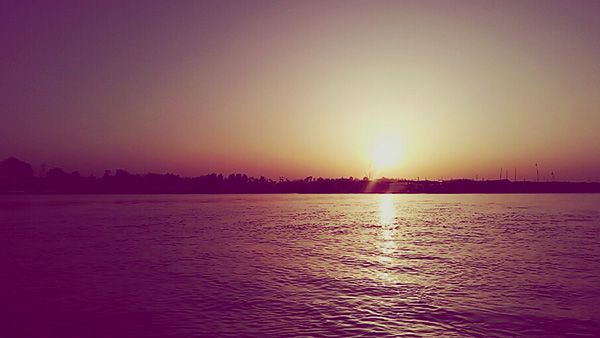
1. Ganga Temple of Garhmukteshwar
Garhmukteshwar crowds gather to visit the ancient Ganga temple is situated on the 80 feet high mound in Garhmukteshwar. Reportedly, devotees, when their wishes get fulfilled, make offerings to the Lord. Just try throwing a stone on the steps of this temple, it produces such a low-pitched slapping sound that you will feel you have just thrown it into a river. It feels like Goddess Ganga is just rippling underneath.
This is actually a special type of stone that is installed in the stairs of the temple. One had to climb 100 steps in earlier times to reach the temple but now only 84 steps are remaining due to damage via road construction and the like. Inside the temple, you can find a life like huge statue of Goddess Ganga and a milk white idol of Lord Brahma with four faces and a Shiv Linga. Every year a sprout emerges out of the Shiv Linga on which figures of Lord Shiva and other deities automatically appear in different forms.

2. Kaal Bhairav Nath Temple in Varanasi
Kaal Bhairav is the paap bhakshak of Varanasi, without whose permission one must not enter the city. Worshipping him before you explore the city, helps in ensuring a safe journey in and out. A legend has it that Aurangzeb, after demolishing Kashi Vishwanatha temple tried to enter the premises of the temple of Kaal Bhairav at which time a dog appeared, and bit some of the soldiers. Those bitten soldiers started biting other soldiers in an insane frenzy. Unnerved by this scenario, Aurangzeb gave up the idea of attacking this temple.
Also, as per legend, Lord Brahma, Lord Vishnu and Lord Shiva had an argument about each other's superiority. Lord Shiva in rage, severed Lord Brahma's fifth head and as a result of the sin incurred, had to roam around, observing strict austerities. He finally found his peace and solution in the Matsya teerth, which is now known as Sankat Mochan teerth. Just taking a glimpse at Lord Kaal Bhairava removes all the pain and cares as per the devotees. Surprisingly, alcohol is served here as Prasad to the deity, and the pundits pour the liquor into the mouth of the deity and give away empty bottles as prasad to the devotees.
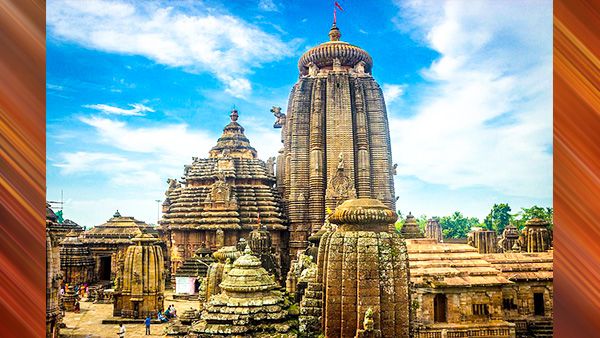
3. Shiva Temple in Titlagarh, Orissa
Kumhda mountain in Titlagarh of Orissa is possibly the hottest place in the entire eastern Odisha. It may be so due to the presence of strong and direct sunlight and also boulders found in plenty. But, leave aside these thoughts as you enter the Shiva Parvati temple, and get exposed to a miracle of God. Inside the temple, it is just not possible to stay cool without a sweater as it is freezing cold inside. The sweltering heat caused by the rocky mountains, transforms into a cool freezing weather inside the temple.
In the month of May-June, when the outside temperature hits 55 degree centigrade of heat, at the same time, the temperature inside the temple touches freezing point. Many a times, devotees during summer wear a blanket when inside the temple.
As per priests, the source of cold weather is Lord Shiva and Goddess Parvati's idols from whom the cold air emits out. Jalabhishek is done daily and it is believed that devotees' wishes get fulfilled by just entering the temple premises. Titlagarh is known for its scalding heat that gets nullified in the presence of Lord Shiva who is seated inside the temple alongside his consort Goddess Parvati.
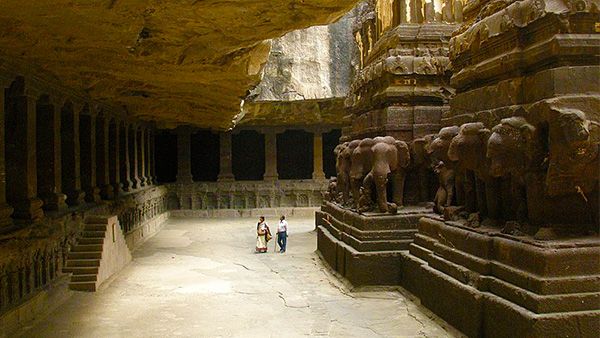
4. Kailasa Temple, Ellora (Maharashtra)
Ellora caves are undoubtedly the 1300 years old world's largest single monolithic structures. Great Kailas is a multistoried complex of temples built for Lord Shiva. This marvellous temple is carved out of a single volcanic basaltic rock of the Charanandri hills. Even the sculptures are carved from the same variety of rock.
The whole temple is carved from top to bottom and is a perfect example of vertical excavation. The drill marks on the surrounding walls are even now visible. Nearly 200,000 tonnes of rock, as per the legends were removed to construct this huge structure. It took 18 years for the ancient kings to build this temple and what surprises people is the methods used in carving these complex sculptures with such precision.
Architecture of the temple resembles Mount Kailash, the base level at which you can find huge monolithic elephants seeming to hold the entire structure in balance. The structure, for its coating, had used a thick layer of plaster a bit of which remains even today. Massive architecture and sculptural finesse triggers even a child's curiosities. About 145 feet wide, 195 feet long and 90 feet high, the area that the Kailash Temple occupies is twice the size of the Parthenon in Athens, Greece.
The most notable rock sculptures display the Dashavatar and scenes from the ancient Hindu epics. The image of Nandi, four sculptures of lions standing on the roof of Mahamantapa, are all the more endearing to your aesthetic senses.
Kailasa temple can not be destroyed by Aurangzeb although he tried to demolish it continuously for 3 years, but succeeded in disfiguring a few statues here and there. It has a translation of Ramayana engraved on it. Added to this, there are 30 million Sanskrit carvings that need to be decoded.
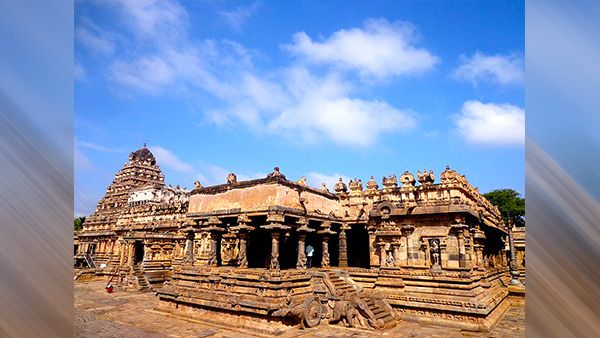
5. Airavatesvara Temple, Tamil Nadu
One
of
the
three
ancient
temple
clusters,
the
Airavateshwara
in
Darasuram
has
been
given
the
UNESCO
heritage
status.
Though
the
upper
portion
of
the
Gopura
is
totally
razed
down,
the
smaller
portion
inside
the
temple
remains
unharmed.
The
famous
Chola
king
Rajaraja
Chola
the
second,
built
this
temple
in
12th
Century
CE.
Airavatesvara
Temple,
along
with
the
famous
Brihadeeswara
Temple
at
Thanjavur
and
the
Gangaikondacholeeswaram
Temple
at
Gangaikonda
Cholapuram
is
a
part
of
the
architectural
trinity
which
are
recognized
as
the
UNESCO
world
heritage
sites.
Yama (the god of the dead) having been cursed by a sage due to which he had to undergo a constant burning sensation all over his body, actually prayed at this temple to Lord Shiva to relieve him of it. He got rid of the curse after dipping himself in the temple water tank which is now called Yamatheertham‘.
Another feature that catches you by surprise at the Airavatesvara Temple is its ‘Singing Steps', which is a flight of seven steps leading to Balipeetham. They represent seven notes of music. It is believed that when one steps foot on them or just taps on them, they can hear all the seven notes of music.
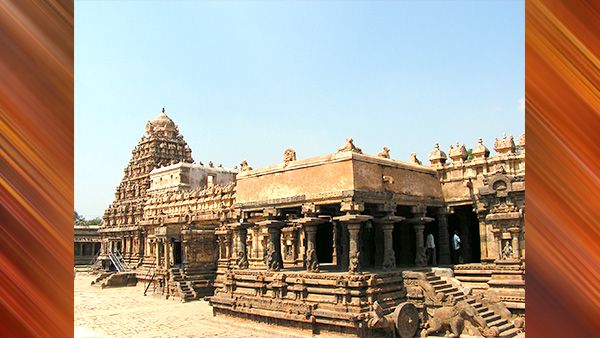
6. Lingaraja Temple, Odisha
The word Lingaraja The word Lingaraja refers to "The king of Lingam". And Lord Shiva is known as The King of Lingam. Bhuvaneshwari is his consort. Since, in the 13th century, this temple was under a Mango tree. It was called Ekamra kshetra as per the Ekamra Purana, a Sanskrit religious text. In the era of the 6th century, the Lingaraja temple was built. Some say that this temple was built by Lalat Indu Keshari (615- 657 CE) whereas others believe it was built by Yayati I Somavamshi King.
The east-facing main entrance of Lingaraja temple is built using Sandstone and Laterite. There are South and North entrances as well.
External walls of the hall are adorned by chiselled figurines of beasts and human beings. The water of the Bindu Sara tank situated here., supposedly gets filled by an underground river. This tank was blessed by Lord Lingaraja himself. This holy water is distributed among saints, devotees and monks that visit the temple. This water tank cleanses your soul and body and heals all physical and spiritual ailments. On Mahashivaratri day, the water out of the holy tank is distributed among all devotees.
Devotees, on the day of Mahashivaratri visit the temple to fast the entire day. The sculptures are worshipped with flowers and leaves and milk. Lingaraja is worshipped as a combination of Lord Vishnu and Lord Shiva. Hence, it represents harmony between the three philosophical schools of Vaishnavism, Hinduism, and Shaivism.
Disclaimer: The information is based on assumptions and information available on the internet and the accuracy or reliability is not guaranteed. Boldsky does not confirm any inputs or information related to the article and our only purpose is to deliver information. Boldsky does not believe in or endorse any superstitions.
Image sources: Wikimedia Commons
-
 yoga spiritualityMaha Shivratri 2024: Four Prahars Of Maha Shivratri And Know Their Significance
yoga spiritualityMaha Shivratri 2024: Four Prahars Of Maha Shivratri And Know Their Significance -
 yoga spiritualityMaha Shivratri 2024: Best Mehendi Designs That Will Capture The Essence Of Mahadev, Videos Inside!
yoga spiritualityMaha Shivratri 2024: Best Mehendi Designs That Will Capture The Essence Of Mahadev, Videos Inside! -
 yoga spiritualityMaha Shivratri 2024: What Does Watching Lord Shiva And Things Associated With Him In Your Dream Mean?
yoga spiritualityMaha Shivratri 2024: What Does Watching Lord Shiva And Things Associated With Him In Your Dream Mean? -
 healthMaha Shivratri 2024: Lord Shiva's Favourite Food Items And Their Health Benefits
healthMaha Shivratri 2024: Lord Shiva's Favourite Food Items And Their Health Benefits -
 yoga spiritualityMaha Shivratri 2024: Avoid Making These Mistakes If You Want Happy Married Life Filled With Divine Grace
yoga spiritualityMaha Shivratri 2024: Avoid Making These Mistakes If You Want Happy Married Life Filled With Divine Grace -
 yoga spiritualityMaha Shivratri 2024: What Are The 19 Avatar Of Lord Shiva? Know The Meaning And Significance
yoga spiritualityMaha Shivratri 2024: What Are The 19 Avatar Of Lord Shiva? Know The Meaning And Significance -
 astrologyMaha Shivratri 2024: These Zodiac Signs Are Lord Shiva's Favourites, They Will Get Special Blessings
astrologyMaha Shivratri 2024: These Zodiac Signs Are Lord Shiva's Favourites, They Will Get Special Blessings -
 yoga spiritualityMahashivrati 2024: 20 Trendy Baby Boy Names Inspired by Lord Shiva
yoga spiritualityMahashivrati 2024: 20 Trendy Baby Boy Names Inspired by Lord Shiva -
 yoga spiritualityMahashivratri 2024: An Auspicious Yoga Will Form After 300 Years Will Bring Success And Prosperity
yoga spiritualityMahashivratri 2024: An Auspicious Yoga Will Form After 300 Years Will Bring Success And Prosperity -
 astrologyMaha Shivratri 2024: Know How Zodiac Signs Will Be Blessed By Lord Shiva On This Day
astrologyMaha Shivratri 2024: Know How Zodiac Signs Will Be Blessed By Lord Shiva On This Day -
 yoga spiritualityDo You Know The Founder Of Aghor Tradition? From Staying In A Crematorium To Living Up To 150 Years
yoga spiritualityDo You Know The Founder Of Aghor Tradition? From Staying In A Crematorium To Living Up To 150 Years -
 yoga spiritualityKaal Bhairav Jayanti 2023: Wishes, Greetings, Texts, Messages, Images, WhatsApp and Facebook Status
yoga spiritualityKaal Bhairav Jayanti 2023: Wishes, Greetings, Texts, Messages, Images, WhatsApp and Facebook Status


 Click it and Unblock the Notifications
Click it and Unblock the Notifications



